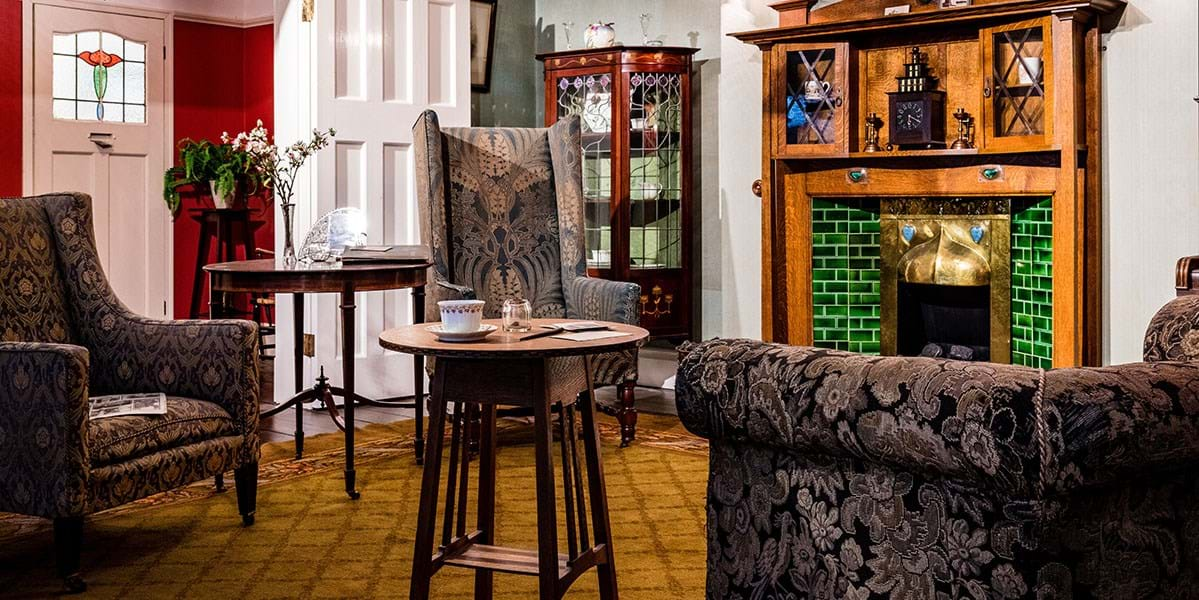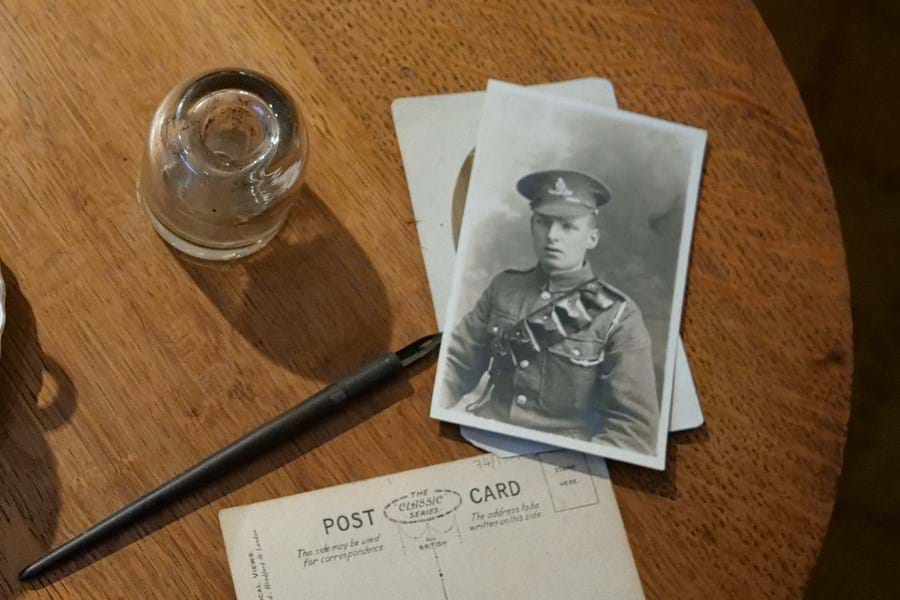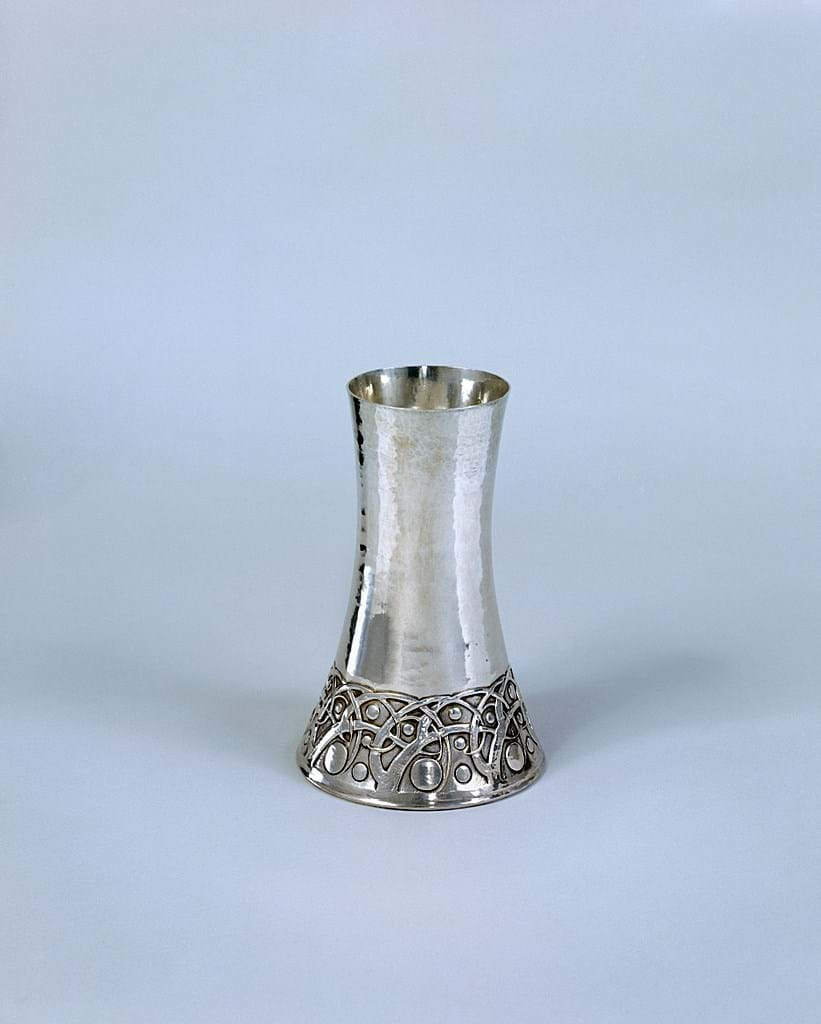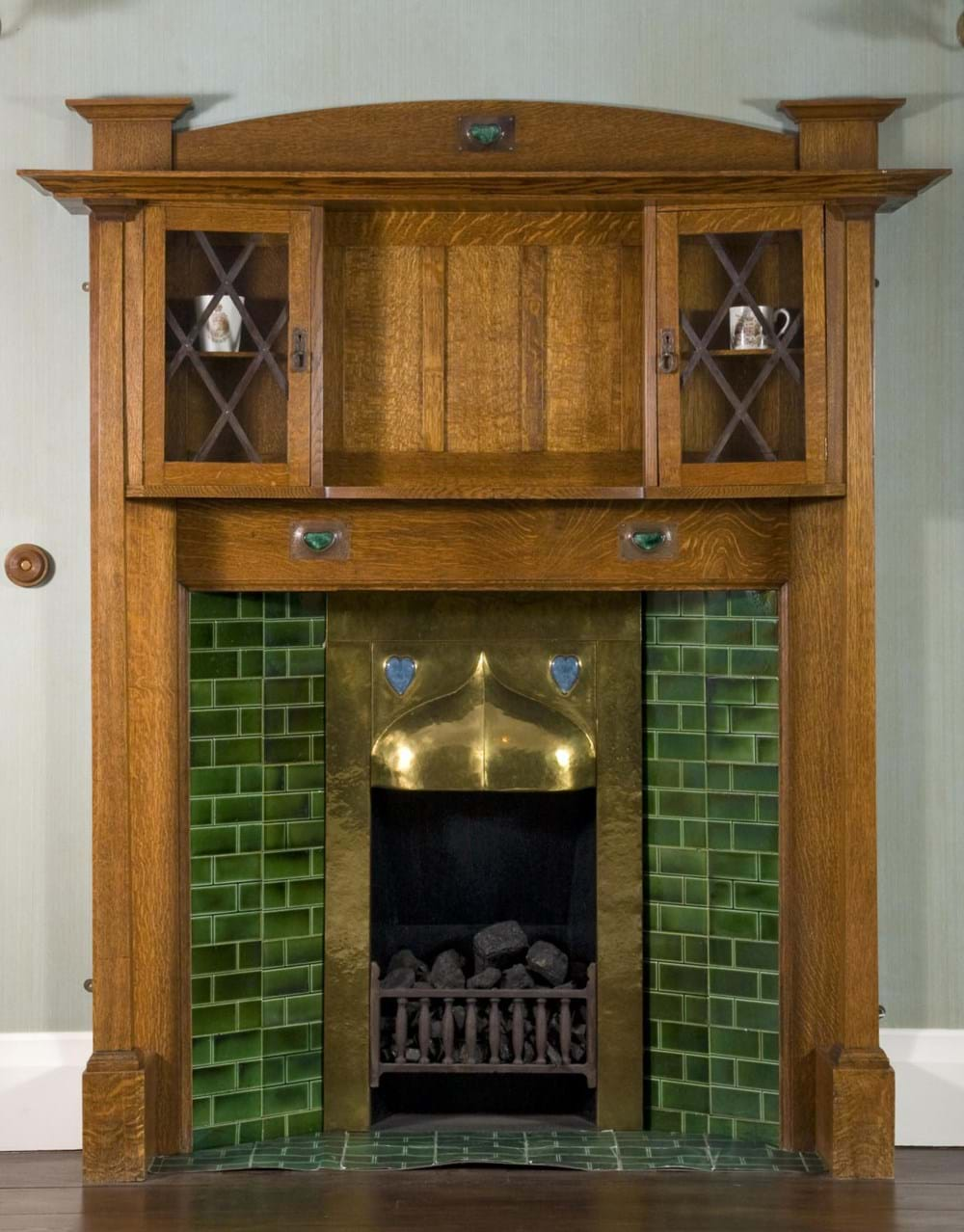A drawing room in 1915
This room was a comfortable and relaxing space, fitted with modern technologies like electric lamps. The popular Arts & Crafts style dictated that furnishings should be simple and 'honest', while the French windows allowed sunlight and fresh air into the room, considered vital to good health.
 Photograph by Em Fitzgerald
Photograph by Em Fitzgerald
What's happening
It is evening and the family are spending time together in their comfortable drawing room.
The eldest son has recently volunteered to join the British Army to fight in the First World War. His mother is sitting on the sofa so she can use the light of their new electric lamps to write him a letter.
Like many women in Britain, she and her daughter are knitting socks and other clothes to send to soldiers at the Front to keep them warm.
Objects to look out for
Vase, Charles Robert Ashbee, 1899
The Arts and Crafts movement celebrated simplicity, individual expression of makers and 'honest' hand-crafted designs. These were often influenced by nature and featured flowers, fruit and animals.
Charles Robert Ashbee was a leading figure in the Arts and Crafts movement, and the simple design and use of naturalistic motifs in this piece is typical of his work.

Photographs, 1890–1910
In the late 1800s cameras and film became cheaper and photography spread in popularity.
Photographs were increasingly displayed in the home and albums were created. As well as more formal portraits in studios, the inexpensive Brownie box camera began to be sold in 1900, enabling families to take their own photographs.
Fire place, 1905–1910
By the 1900s many middle-class households often only had one servant. Among many other jobs, the maid had to clean the fireplace grate, sweep and wash the hearth, and light and tend to the fire.


